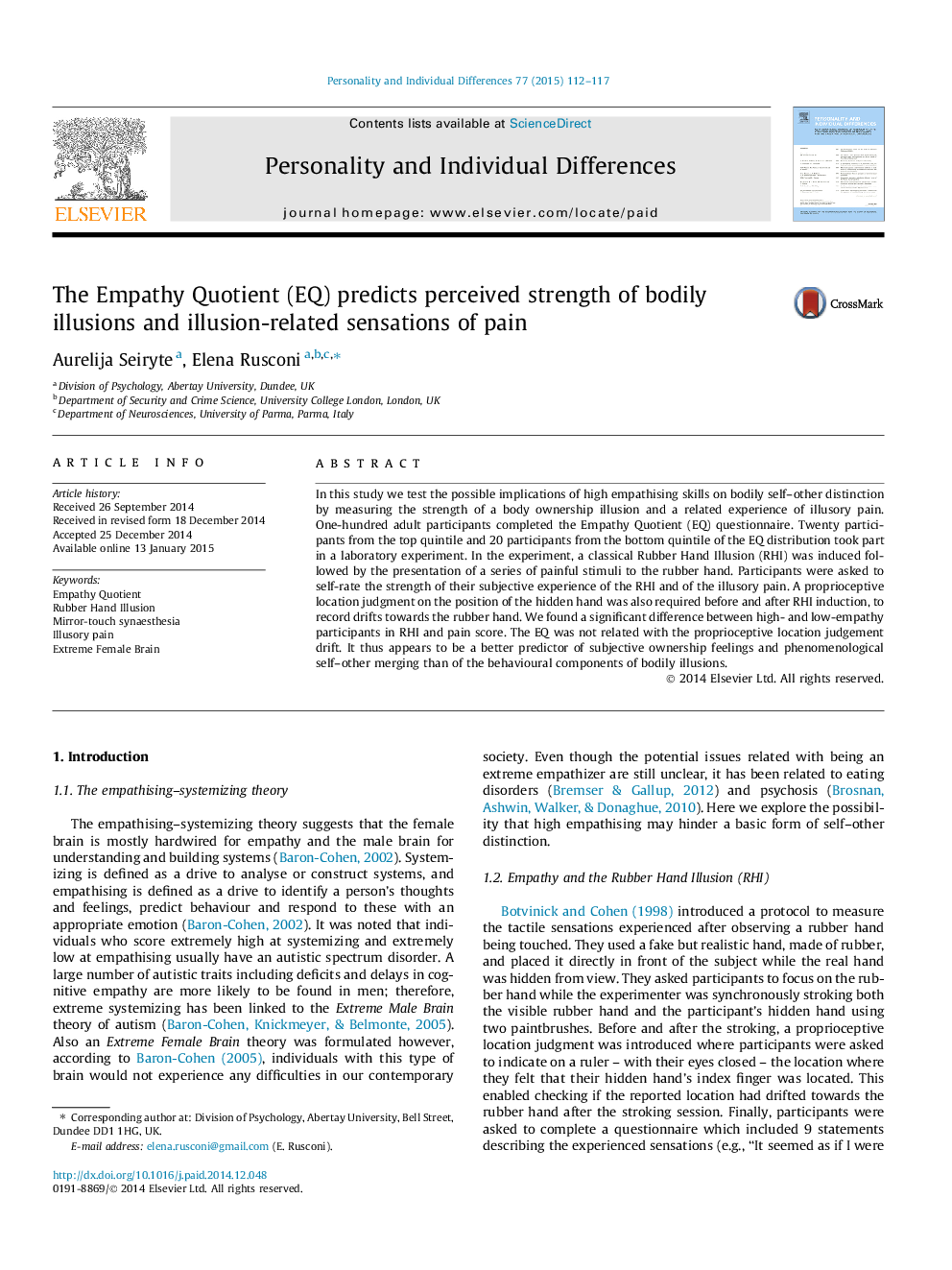| کد مقاله | کد نشریه | سال انتشار | مقاله انگلیسی | نسخه تمام متن |
|---|---|---|---|---|
| 890216 | 1472041 | 2015 | 6 صفحه PDF | دانلود رایگان |

• EQ predicts the subjective strength of the RHI.
• EQ is more clearly related to feelings of ownership than to the proprioceptive drift.
• EQ predicts subjective experience of pain sensations during RHI.
• High-empathy skills and the Extreme Female Brain may associate with poor self–other distinction.
In this study we test the possible implications of high empathising skills on bodily self–other distinction by measuring the strength of a body ownership illusion and a related experience of illusory pain. One-hundred adult participants completed the Empathy Quotient (EQ) questionnaire. Twenty participants from the top quintile and 20 participants from the bottom quintile of the EQ distribution took part in a laboratory experiment. In the experiment, a classical Rubber Hand Illusion (RHI) was induced followed by the presentation of a series of painful stimuli to the rubber hand. Participants were asked to self-rate the strength of their subjective experience of the RHI and of the illusory pain. A proprioceptive location judgment on the position of the hidden hand was also required before and after RHI induction, to record drifts towards the rubber hand. We found a significant difference between high- and low-empathy participants in RHI and pain score. The EQ was not related with the proprioceptive location judgement drift. It thus appears to be a better predictor of subjective ownership feelings and phenomenological self–other merging than of the behavioural components of bodily illusions.
Journal: Personality and Individual Differences - Volume 77, April 2015, Pages 112–117